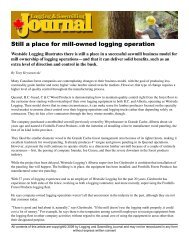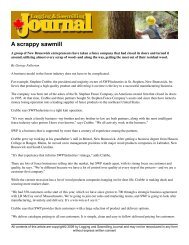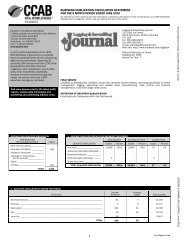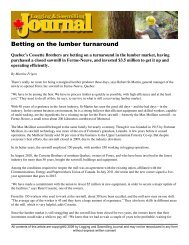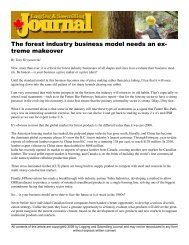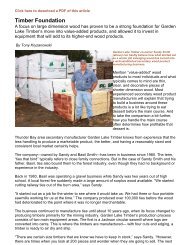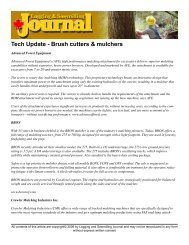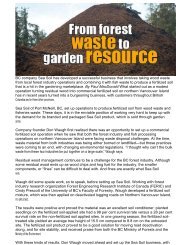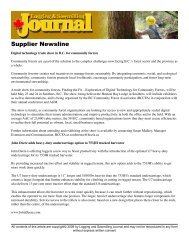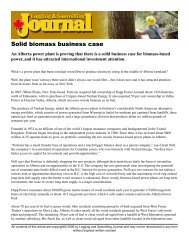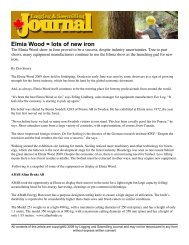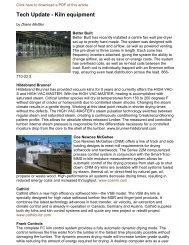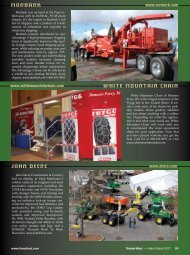Log Max heads tackle west coast wood .pdf - ForestNet
Log Max heads tackle west coast wood .pdf - ForestNet
Log Max heads tackle west coast wood .pdf - ForestNet
You also want an ePaper? Increase the reach of your titles
YUMPU automatically turns print PDFs into web optimized ePapers that Google loves.
savings in both machine and fuel costs.<br />
The <strong>Log</strong> <strong>Max</strong> 10000XT has powerful 1404cc roller motors equipped with all new steel rollers and a powerful 30cc saw<br />
motor with ¾ pitch chain. The processor style delimbing knives have replaceable edges and mechanical stops.<br />
The processor configuration of the <strong>Log</strong> <strong>Max</strong> 10000XT is equipped with integrated top saw and processor link. The<br />
standard processor head weighs in at 2,970 kgs. It features a feed force of 9555 lbf and feed speed of 13.8 fps.<br />
The <strong>Log</strong> Mate 402 on the 10000XT is said to be an easy to use control system with enhanced capabilities and state of the<br />
art “4 wire” CAN-BUS communication for all head control functions. A powerful high performance controller rapidly<br />
processes information for precise head positioning and cutting, with the logs consistently merchandized.<br />
The system features automatic control of up to 160 preset lengths and diameters along with programmable tolerances,<br />
assuring full conformance to a broad range of mill log specifications, says <strong>Log</strong> <strong>Max</strong>.<br />
The <strong>Log</strong> Mate 402 is easily adaptable to a full range of carriers. Harvesting and processing efficiency is always maintained<br />
through fully customizable control buttons with automatic functions for up to five different operators.<br />
All of these features help keep the processing equipment running, and help contractors stay efficient.<br />
And for contractors such as Steve Pierce, bunching and processing is the key part of the efficiency equation.<br />
“The hardest jobs out there are bunching and processing. With the bunching, you have to make sure the tree is felled<br />
properly, and you don’t have any snags, no trees get caught up. Then you have the processor and the loader.”<br />
Moving into doing stump-to dump seemed to be a natural progression, he says. “We were already doing the hardest<br />
things—with the harvesting and the processing, you already have the biggest investment in machinery.” So the move into<br />
stump to dump seemed natural.<br />
“We had worked for a couple of good contractors, and they kind of got fed up and got out of the business, and we decided<br />
to go full into it.”<br />
As with all things related to logging and the forest industry these days, the margins are slim, so he relies on efficient<br />
equipment. “Going stump to dump is working out, but it isn’t easy. It’s been a tough industry the last few years, with very<br />
slim margins.”<br />
But, he notes, the log market seems to be improving, with prices slowly moving in the right direction.<br />
“But it’s still a struggle out there,” he says. “We’ve got to keep adapting—but that’s the logging business, isn’t it?”<br />
All contents of this article are copyright© 2009 by <strong>Log</strong>ging and Sawmilling Journal and may not be rerpoduced in any form<br />
without express written consent



